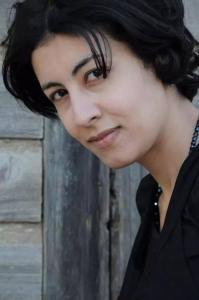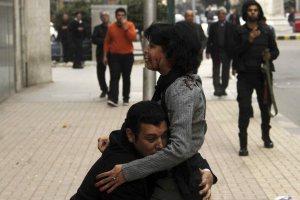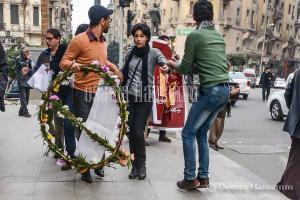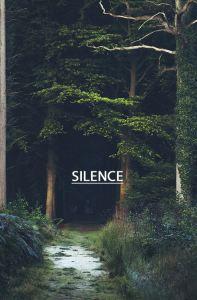 In Memory of Shaimaa el-Sabbagh
In Memory of Shaimaa el-Sabbagh
1984 – January 24, 2015
Who will honor the city without a name
If so many are dead and others pan gold
Or sell arms in faraway countries?
-Czesław Miłosz
Like millions of Americans, I woke up on Wednesday to a front-page photo of a man carrying a mortally wounded young woman across a Cairo street. Oddly, I hadn’t heard a thing about the story despite the fact that the photograph—and the others that accompanied it—had already captured the attention of much of the rest of the world. The young woman was Egyptian mother, poet and folklorist, Shaimaa el-Sabbagh. The young man was her friend, Sayyed Abu el-Ela, a lawyer and activist. On the afternoon of January 24, Shaimaa and Sayyed and their friends were part of a small demonstration intent on delivering flowers to Tahrir Square in remembrance of the fourth anniversary of Arab Spring. The police fired on the group, Shaimaa was hit, and she ultimately died on the street in Cairo.

Shaimaa is one of thousands of Egyptians who have been killed by police since the 2011 uprising, including 17-year old Sondos Reda, who was killed the same day as Shaimaa at a demonstration in Alexandria. As we mourn the deaths of Sondos and Shaimaa, we can’t help but also recall the deaths of Eric Garner and Michael Brown and Tamir Rice, also at the hands of the police.
Since I first saw the images and started reading about Shaimaa, I cannot get her out of my mind. I can’t stop thinking about her five-year-old son, Bilal, and about her friends who held her as she died. Shaimaa was doing what poets do—using the power of metaphor to re-assert individual memory and spirit into what seems a chaotic and inhuman system. She was carrying flowers into the public square to honor the dead. She was speaking the symbolic language of remembrance and hope and rebirth. And she was shot down in broad daylight in the process.
In the cascade of daily tragedy, it is tempting to succumb to the series of “yes buts.” Yes but Shaimaa’s death was not as brutal or violent or horrific as this other act of brutality or violence or horror. Yes but this killing was not as ruthless as the one that happened two weeks ago or yesterday or this morning. Yes but Shaimaa was not tortured quite as torturously, so we dismiss her death as not quite as senseless and not quite as deserving of our attention and move on to the next horrific tragedy.
I am stepping out of the yes but stream. I am declaring my refusal to participate in the ranking of brutality. Not only is it soul-crushing, but it incentivizes those who trade in shock and terror to become ever more imaginative and callous in their campaign of broadcast thuggery.
Rather, I am going to look to Shaimaa’s life—and her sacrifice in death—as a window into the wondrousness that is the human spirit. One of the things I most want to remember about Shaimaa is that she once spent months touring the Nile Delta studying and writing about traditions and practices for making flatbread. And that in November, she supervised students who studied and performed the traditional Alexandrian dances that surround a birth. And that she wrote an ode to her lost handbag:
What might she be feeling right now
Maybe scared?
Or disgusted from the sweat of someone she doesn’t know
Annoyed by the new streets?
If she stopped by one of the stores we visited together
Would she like the same items?
Anyway, she has the house keys
And I am waiting for her
I am going to remember that she chose to celebrate the small rituals that give humans meaning in the face of turmoil and murder. I am going to remember that she was courageous not just on the day that she carried flowers through the streets of Cairo but on all the days before when she stood for what is life-giving in the face of what is brutal and destructive.
I am going to remember that she was courageous not just on the day that she carried flowers through the streets of Cairo but on all the days before when she stood for what is life-giving in the face of what is brutal and destructive.
Last year, Tilda Swinton gave a talk at the Rothko chapel where she said: I believe that all great art holds the power to dissolve things: time, distance, difference, injustice, alienation, despair. I believe that all great art holds the power to mend things: join, comfort, inspire hope in fellowship, reconcile us to ourselves. Shaimaa el-Sabbagh spent her all-too-short life on the side of dissolving injustice and mending hope, and that is how I am going to remember her.
There are no platitudes to offer a five year old whose mother was murdered as she laid down flowers of remembrance. To quote Pope Francis on his recent trip to vis it victims of the hurricane in the Philippines: “All I can do is keep silence and walk with you all with my silent heart.”
it victims of the hurricane in the Philippines: “All I can do is keep silence and walk with you all with my silent heart.”
But for poets—in the United States and abroad—silence is exactly what we cannot keep. We cannot keep silence while journalists are being beheaded and arrested, while cartoonists are being executed in their offices, while poets are being shot down in the street. We must keep making and writing and painting. We must keep protesting and laying flowers down as offerings. We must stand for that which creates in the face of so much that destroys. We must stand on the side of mending what is broken. We must stand with Shaimaa.
